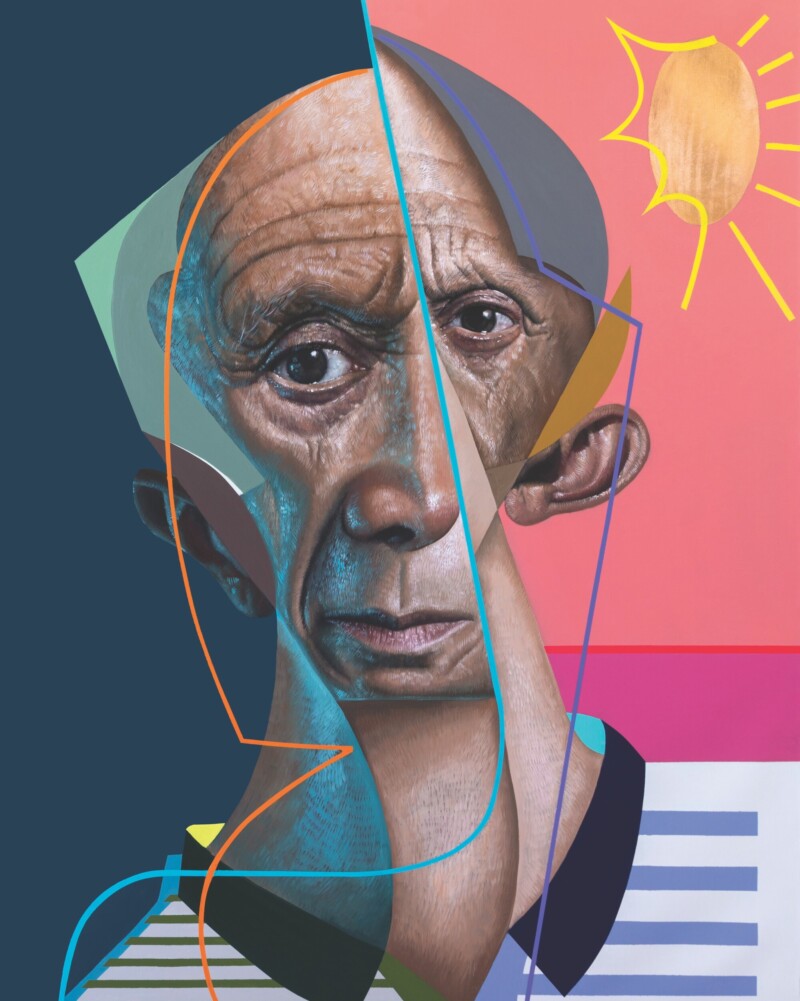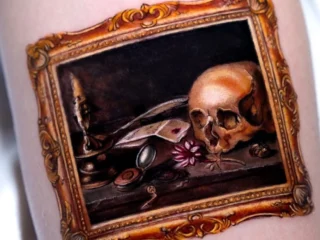Inked Mag Staff
May 24th, 2024
A Fusion of Tradition and Innovation
Exploring Post-Neocubism Art with Miguel Angel Belinchón (Belin)

Cubism, with its revolutionary approach to depicting reality through fragmented forms and geometric shapes, laid the foundation for numerous artistic movements in the 20th century. One such movement that emerged as a response to the cubist style was neocubism, which sought to reinterpret and modernize the principles of cubism. In the wake of neocubism, a new wave of artistic expression known as post-neocubism arose.
For Miguel Angel Belinchón, or Belin, post-neocubism is an artistic form in which he feels completely comfortable expressing what he needs. According to Belin, it encompasses the artistic avant-garde effect that has contributed the most to his artistic development. It incorporates the clarity and power of graffiti lines, the precision of realism, and the freedom of cubism to play with perspective and forms, which in turn allows him to unleash his imagination.
Historical Context
Cubism, pioneered by Pablo Picasso and Georges Braque in the early 20th century, broke away from traditional modes of representation and introduced a new way of looking at the world through multiple perspectives. Neocubism, which gained prominence in the mid-20th century, retained the geometric precision of cubism while incorporating elements of abstraction and surrealism. The transition to post-neocubism was driven by a desire to push the boundaries of traditional cubist techniques and explore new possibilities in form, color, and composition.
Belin draws inspiration from great masters like Diego Velázquez, Francisco Goya, Gustav Klimt, and Amedeo Modigliani, as well as from his personal friends and contemporaries in the current art scene, such as Digital DOES, Smug One, and DAIM.
Characteristics of Post-Neocubism Art
Post-neocubism art is characterized by its fusion of traditional cubist elements with modern influences, resulting in a dynamic interplay of shapes, colors, and textures. Artists working in the post-neocubist style often experiment with unconventional perspectives and spatial arrangements, creating visually captivating compositions that challenge viewers’ perceptions of space and dimension. The use of technology and digital mediums has also become increasingly prevalent in post-neocubist works, allowing artists to explore new avenues of creative expression and engage with audiences in innovative ways.

“Generally, I immerse myself in my surroundings, my life, and my family,” Belin says. “Sometimes I reflect on society and the world, but I like to retreat into my own world, focusing on the simple things.” His forms and creations come from his graffiti days, where originality and precision in strokes fundamentally stand out.
A mentor taught Belin that proportions and conventions were “nonsense.” From our intellect and feelings, we can create new and bold worlds and figures. Belin says the cubist style itself is bold and groundbreaking. Each artist interprets it uniquely, contributing continuously to the movement. Integrating realism, which Belin has studied for many years, makes him feel comfortable yet expectant. Breaking the figure requires him to be both consistent and daring.
Themes and Symbolism
Common themes in post-neocubism include identity, memory, and the relationship between humans and technology. Artists often use symbolism and metaphor to convey deeper meanings in their works, inviting viewers to contemplate the complexities of the modern world. The intersection of culture, society, and identity is a recurring motif in post-neocubist art, reflecting the diverse perspectives and experiences of artists working in this evolving style. Specifically for Belin, color contributes entirely to his creations, serving as a parallel language to the figure, explaining that it’s like the guitar accompanying the bass in a melody; it has its own discourse and lyrics.
Post-neocubist artists employ a variety of innovative techniques to create their works, including collage, digital manipulation, and mixed media. Experimentation with materials and mediums allows artists to push the boundaries of traditional artistic practices and explore new modes of expression. Digital advancements also have a profound influence on post-neocubism, enabling artists to incorporate interactive elements and multimedia components into their works, blurring the lines between the physical and digital realms.
Critiques and Interpretations

The reception of post-neocubism in the art world is mixed, with some critics praising its innovative approach to combining traditional and modern elements, while others question its authenticity and originality. Critical interpretations of post-neocubist works often focus on the political, social, and cultural implications of the art, highlighting the complex relationships between art, society, and technology. Debates surrounding the commercialization and commodification of post-neocubism also continue within the art community.
The Future of Post-Neocubism
As post-neocubism continues to evolve, its future remains both exciting and uncertain. With each new generation of artists bringing their unique perspectives and innovations to the movement, post-neocubism will continue to push the boundaries of artistic expression and challenge our preconceived notions of what art can be.
As technology advances and the world becomes increasingly interconnected, post-neocubist artists will have new tools and platforms to create and share their work. The digital realm, in particular, offers opportunities for experimentation and collaboration, allowing artists to connect with audiences around the globe and explore new modes of artistic expression.

Ultimately, the legacy of post-neocubism lies in its ability to inspire creativity, provoke thought, and spark dialogue. By embracing the spirit of innovation and experimentation, artists can continue to push the boundaries of art and contribute to a vibrant and dynamic cultural landscape.
Fundamentally, post-neocubism represents a bold, forward-thinking approach to artistic creation that combines the rich history of cubism with contemporary sensibilities. Through its emphasis on formal experimentation, social commentary, and technological innovation, post-neocubism offers a compelling framework for artistic exploration and expression in the 21st century.
For Belin, one of his greatest challenges is to surpass himself, creating a piece that is not like the previous one but doesn’t deviate so much that it seems created by someone else. Maintaining his artistic identity is a constant challenge. Belin shares, “I hope viewers enjoy my work as a moment in life, as someone who has dedicated moments to providing brushstrokes for a purpose. I want them to see an artist in constant evolution, with much to express.”
Editor's Picks
Bridging Classical Art and Modern Tattooing
Esteban Rodriguez brings the discipline of classical fine art to the living canvas of skin, creating hyper-realistic tattoos that merge technical mastery with emotional depth.
Show Your Ink Fashions Brings Custom Style to Tattoo Culture
Show Your Ink Fashions creates custom shirts designed to showcase your tattoos as wearable art, blending fashion with personal expression.
The Ultimate “Superman” Tattoo Roundup: Just in Time for Superman’s Return to Screens
With Superman’s big return to theaters, fans are revisiting some of the most iconic ink inspired by the Man of Steel.


















